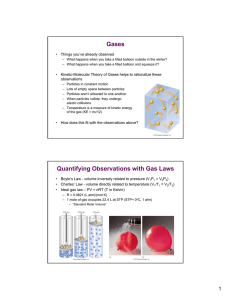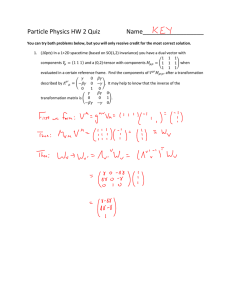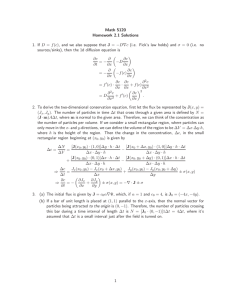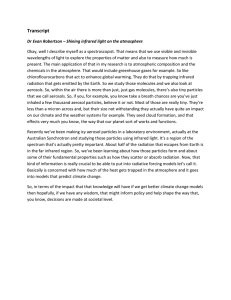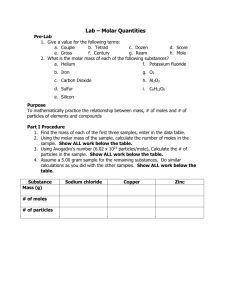Heat, Temperature and Matter
advertisement
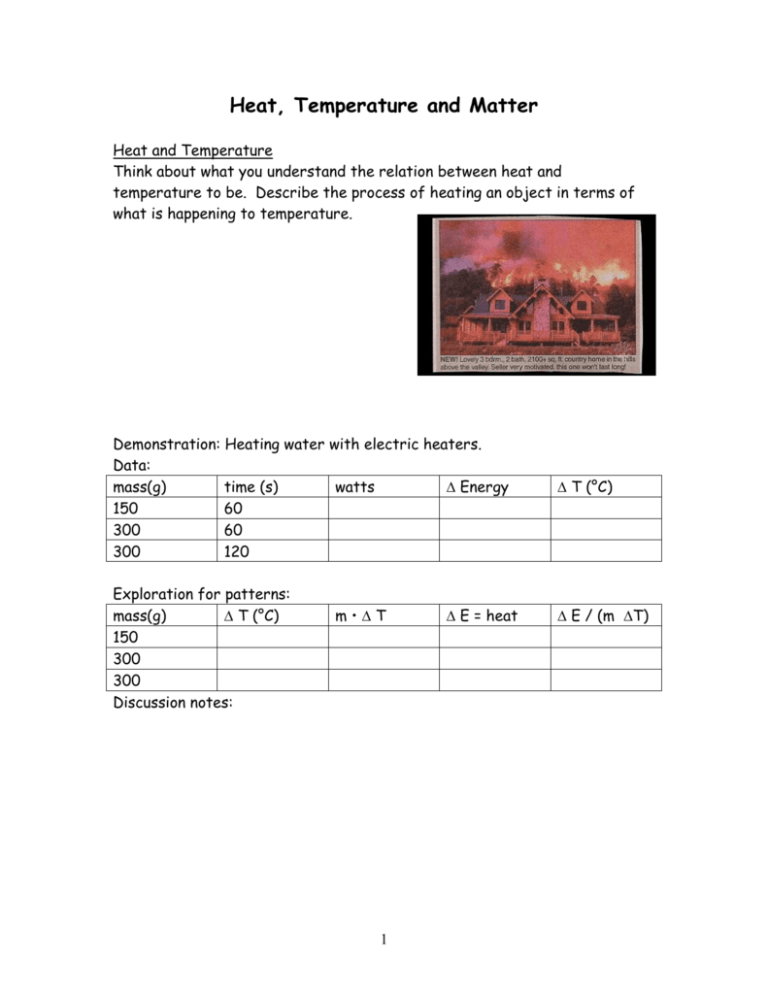
Heat, Temperature and Matter Heat and Temperature Think about what you understand the relation between heat and temperature to be. Describe the process of heating an object in terms of what is happening to temperature. Demonstration: Heating water with electric heaters. Data: mass(g) time (s) watts Energy 150 60 300 60 300 120 Exploration for patterns: mass(g) T (°C) 150 300 300 Discussion notes: m•T 1 E = heat T (°C) E / (m T) Gas Pressure vs. Temperature demo. Sketch, description of apparatus V = 4/3 r3 = 4(3.1416)/3 ( )3 = T (°C) P (psi) Graph of results: Discussion: Relationships P, T : mass, T, E: 2 Particle model: Mass comes in particles; twice the mass = twice as many particles (same material). mass / (Molecular weight) = number of moles of particles (big dozen). Since our gas sample in the demo didn’t change height, the only energy which can increase for point masses is the kinetic energy (provided they are not magnetic, have zero net electrical charge, .... which are normally true). mass, T, E relation: P, T relation: One atmosphere ≈ 101 kPa = 101 kN/m2 = 14.7 psi Temperatures in energy calculations are always in Kelvin = 0 K at absolute zero and 1 K = 1°C in size. PV/T = From Chemistry, we know that 22.4 Litres of gas at 0°C and one atmosphere pressure contains one mole of particles. Calculate number of particles in bulb by n = V/22.4 L = moles. Calculate PV/(nT) = 3


